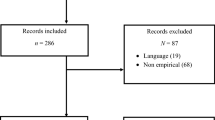Abstract
Despite burnout being considered primarily a syndrome related to medical professionals, it is now known that it affects a wider range of professions as well. It is seen as a state of complete physical, emotional, and cognitive depletion. In physicians, not only can burnout lead to work-related absenteeism but also it may affect their patients while teachers’ burnout may affect the mental well-being of their students. This study explored whether teachers have higher or comparable rates of burnout with the burnout rates of physicians. Furthermore, we compared them to the norms we established in the Czech Republic in the previous year. Cross-sectional data collection was utilized through a combination of multiple questionnaires. The questionnaires analyzed for the purpose of this study were the SMBM and BDI-II. Regardless of gender, physicians suffer from significantly higher burnout symptomatology when compared with teachers. These differences were found to be statistically significant. Furthermore, significant differences were also found between males with depressive symptomatology. We did not observe this difference in females. Our results suggest that, although burnout is a syndrome that appears regardless of profession, its manifestation can be quite different depending on the type of job. Overall, higher levels of burnout were found among female teachers compared with their male counterparts; between physicians, the situation was reversed; burnout affected more males than females. In all categories, more females were within the norm of Czech population. Nonetheless, the risk of burnout should not be underestimated in either of these professions.
Similar content being viewed by others
References
American Psychiatric Association. (2013). Diagnostic and statistical manual of mental disorders (5th ed.). Washington, DC: Author.
Foley, C., & Murphy, M. (2015). Burnout in Irish teachers: investigating the role of individual differences, work environment and coping factors. Teaching and Teacher Education, 50, 46–55.
Guveli, H., Anuk, D., Oflaz, S., Guveli, M. E., Yildirim, N. K., Ozkan, M., & Ozkan, S. (2015). Oncology staff: burnout, job satisfaction and coping with stress. Psycho-Oncology, 24(8), 926–931.
Gwede, C. K., Johnson, D. J., Roberts, C., & Cantor, A. B. (2005). Burnout in clinical research coordinators in the United States. In Oncology Nursing Forum (Vol. 32, No. 6).
Kinzl, J. F., Traweger, C., Biebl, W., & Lederer, W. (2006). Burnout and stress disorders in intensive care doctors. Deutsche medizinische Wochenschrift (1946), 131(44), 2461–2464.
Kuremyr, D., Kihlgren, M., Norberg, A., Åström, S., & Karlsson, I. (1994). Emotional experiences, empathy and burnout among staff caring for demented patients at a collective living unit and a nursing home. Journal of Advanced Nursing, 19(4), 670–679.
Lederer, W., Kinzl, J. F., Trefalt, E., Traweger, C., & Benzer, A. (2006). Significance of working conditions on burnout in anesthetists. Acta Anaesthesiologica Scandinavica, 50(1), 58–63.
Maslach, C., Schaufeli, W. B., & Leiter, M. P. (2001). Job burnout. Annual Review of Psychology, 52(1), 397–422.
Merecz, D., & Andysz, A. (2014). Burnout and demographic characteristics of workers experiencing different types of work-home interaction. International Journal of Occupational Medicine and Environmental Health, 27(6), 933–949.
Ptáček, R., Raboch, J., & Kebza, V. (2013). Burnout syndrom jako mezioborový jev. Praha: Grada. ISBN 978-80-247-5114-6.
Ptacek, R., Raboch, J., Vnukova, M., Hlinka, J., & Cervenkova, M. (2017). Standardization of Czech version of Beck Depression Inventory (BDI II). European Psychiatry, 41, S539.
Ptáček, R., Raboch, J., Kebza, V., Šolcová, I., Vňuková, M., Hlinka, J., et al. (2017). Česká Verze Shiromovy A Melamedovy Škály Vyhoření. Ceskoslovenska Psychologie, 61(6).
Reichl, C., Wach, F. S., Spinath, F. M., Brünken, R., & Karbach, J. (2014). Burnout risk among first-year teacher students: the roles of personality and motivation. Journal of Vocational Behavior, 85(1), 85–92.
Schaufeli, W. B., Bakker, A. B., & Van Rhenen, W. (2009). How changes in job demands and resources predict burnout, work engagement, and sickness absenteeism. Journal of Organizational Behavior: The International Journal of Industrial, Occupational and Organizational Psychology and Behavior, 30(7), 893–917.
Skaalvik, E. M., & Skaalvik, S. (2009). Does school context matter? Relations with teacher burnout and job satisfaction. Teaching and Teacher Education, 25(3), 518–524.
Smetáčková, I., Vondrová, E., & Topková, P. (2017). Zvládání stresu a syndrom vyhoření u učitelek a učitelů ZŠ. E-Pedagogium, (1).
Swider, B. W., & Zimmerman, R. D. (2010). Born to burnout: a meta-analytic path model of personality, job burnout, and work outcomes. Journal of Vocational Behavior, 76(3), 487–506.
World Health Organization. (1992). The ICD-10 classification of mental and behavioural disorders: Clinical descriptions and diagnostic guidelines. Geneva: World Health Organization.
Financial Support
The study was funded by GA ČR 16-21302S and Progres Q06/1.LF.
Author information
Authors and Affiliations
Corresponding author
Ethics declarations
Conflict of Interest
The authors declare that they have no conflict of interest.
Additional information
Publisher’s Note
Springer Nature remains neutral with regard to jurisdictional claims in published maps and institutional affiliations.
Rights and permissions
About this article
Cite this article
Ptáček, R., Vňuková, M., Smetáčková, I. et al. Who Burns out More? Comparison of Burnout Levels Between Teachers and Physicians in the Czech Republic. Act Nerv Super 61, 165–169 (2019). https://doi.org/10.1007/s41470-019-00034-3
Received:
Revised:
Accepted:
Published:
Issue Date:
DOI: https://doi.org/10.1007/s41470-019-00034-3




